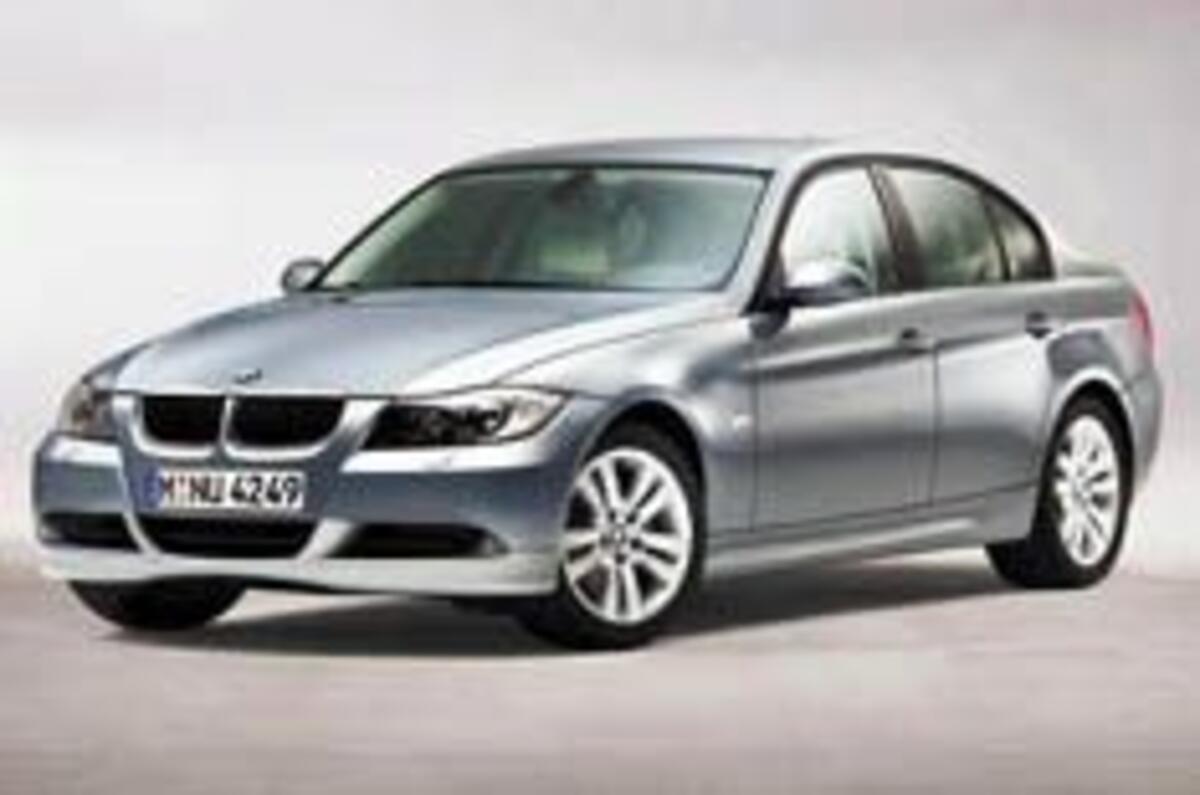BMW’s recent dare-to-be-different design has taken leave on next year’s 3-series. Pictured here officially for the first time, the crucial new compact executive saloon eschews the extravagant look established on Munich’s 1-, 5-, 6- and 7-series models for a more timeless appearance. Set to star at next year’s Geneva Motor Show shortly before going on sale in the UK next April, the fifth-generation 3-series, codenamed E90, represents a major shift in BMW’s model hierarchy. No longer the entry-level model in the German car-maker’s line-up – a position it has occupied for 29 years – the four-door saloon takes on a new role. With it come myriad changes, all aimed at moving it upmarket. Larger in every dimension, the new 3-series also receives more powerful petrol and diesel engines and a new rear-wheel-drive platform shared with the 1-series, along with aluminium-intensive suspension, hi-tech multiplex electrics and a long list of advanced features, including iDrive.
One look will be enough to convince you that this car represents the least extreme iteration of BMW’s present generation of styling created under design boss Chris Bangle. The front end, dominated by a new interpretation of the classic kidney grille and round headlamps under clear glass lenses, is pure BMW, as is the prominent swage line running down the sides and the distinctive ‘Hofmeister kink’ incorporated in the base of the C-pillars.
But instead of the radical surfacing treatment and controversial detailing found on other recent models, the new 3-series boasts an altogether less jarring exterior design with more conventional cues than any of its mainstream siblings. The rear end is also far less radical than what we’ve seen from BMW of late. As is typical of all BMWs, the front overhang is extremely short at just 755mm because the longitudinally mounted engine and gearbox combinations sit well back in the engine bay to help achieve the best possible weight distribution.
The reason for the more harmonious approach is simple: new models don’t come any more important for BMW than this. Despite increased competition on all fronts, the 3-series remains the cornerstone of its business, accounting for a whopping 57 per cent of global sales last year, with 528,258 units sold worldwide. BMW knows that it cannot afford to be too extreme with the look of this car, otherwise it risks sending buyers elsewhere. With the 1-series now firmly established at the base of its line-up, BMW has seized the opportunity to take the 3-series up in size. At 4520mm in length, 1817mm in width and 1424mm in height, the new car is 49mm longer, 78mm wider and 9mm higher than before. The increased dimensions now make it just 6mm shorter (but 89mm wider) than its arch executive-class rival, the Mercedes-Benz C-class. An extended wheelbase, up 35mm to 2760mm, is designed to answer criticism of the outgoing model’s cramped rear quarters. The extended wheelbase and widened tracks have liberated greater interior space in a move BMW claims will see the 3-series more closely challenge rivals like the Audi A4 and Mercedes-Benz C-class for overall versatility – something today’s model cannot do. A higher rear end and longer rear overhang also contribute to a 20-litre improvement in boot space, increasing it to 460 litres.‘It offers nearly as much interior space and luggage capacity as the old 5-series,’ says BMW’s development boss Burkhard Goeschel.





Add your comment